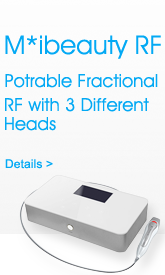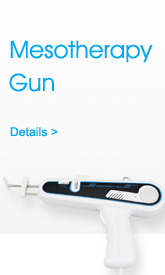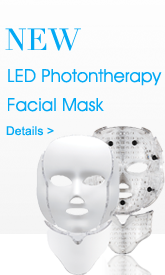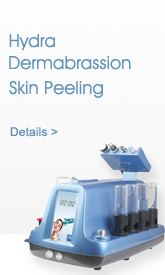RF Micro-needling is a relatively new type of skin rejuvenation treatment. It is also referred to as Fractional Radio-Frequency Micro-Needling; this type of treatment combines the benefits of Micro-needling with the collagen-boosting effects for the thermal effects of Radio Frequency energy. The treatment consists in inserting microneedles into the skin distanced a few mm between each other and delivering Radio Frequency energy into the skin for a few milliseconds.
There are two kinds of microneedles in the market, one is Insulated needles(Also called Semi-Insulated), the other is Non-insulated. Which one is Better?
What is Radiofrequency Microneedling?
Microneedling is the art of placing small, grouped needles into the skin at varying depths to induce remodeling and new collagen formation.
When we add Radiofrequency to micro-needling, we are adding in the element of heat-induced damage to the skin, which further increases collagen deposition and remodeling.
Radiofrequency micro-needling can improve scarring, skin texture, dyschromia, and skin laxity.
Radiofrequency is a controlled electromagnetic system, by which electrons flow from positive to negative electrodes, converting kinetic energy to thermal energy in the skin (i.e., producing controlled heating and damage, which leads to skin remodeling).
What are the benefits of Radiofrequency Microneedling?
- Skin texture
- Skin tightening
- Rhytides
- Acne Scars
- Striae
It may take several sessions to see improvement.
Insulated(Semi-Insulated) vs. Non-Insulated Microneedles – What is the difference?
Both the needle action and the heat action lift, firm, and tighten the skin.
Non-insulated microneedles emit Radiofrequency energy over their entire surface area allowing both the upper and lower layers of the skin to be heated all at once.
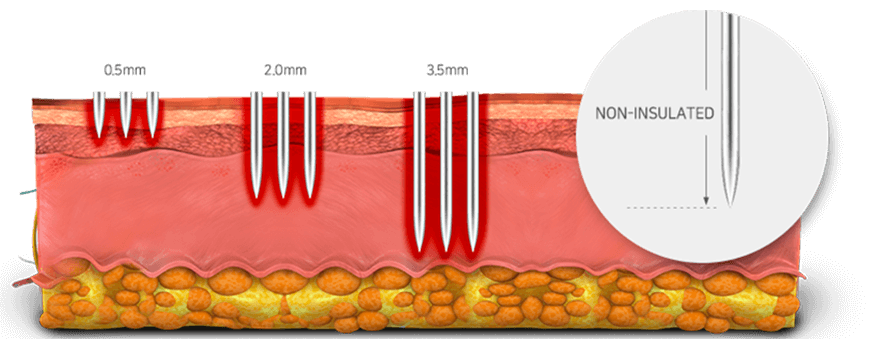
Insulated microneedles have a layer of insulation around them, allowing the heat only to be emitted from the end tip, heating just the lower layers of the skin.

Insulated vs. Non-Insulated Microneedles – Pros and cons
Non-insulated microneedles emit Radiofrequency energy over their entire surface area allowing both the upper and lower layers of the skin to be heated all at once
Non-insulated needles are believed to give more energy due to the increased heating they apply to several layers of the skin at once.
Insulated needles deliver energy only at the tip of the needle, insulated needles will give less energy if compared with non-insulated needles.
But Insulation means that the epidermis is spared, no heat/energy is dispersed here, only the dermis for a more targeted effect (see below)
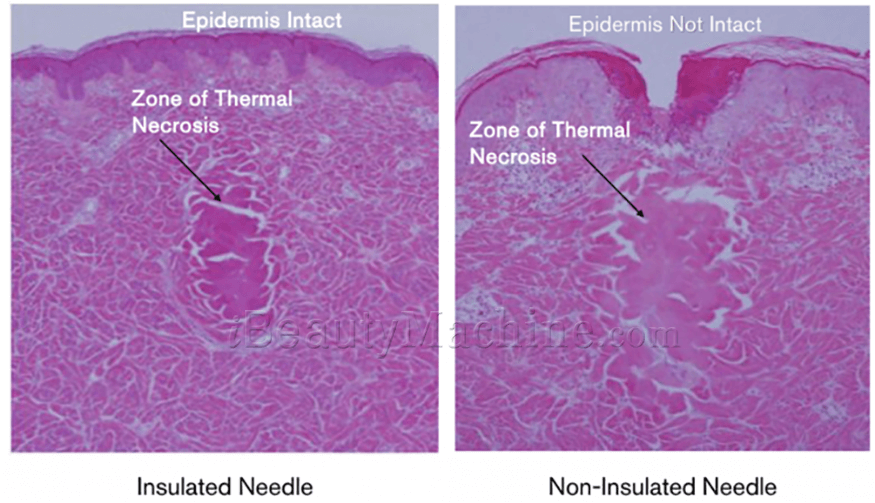
The advantages of Non-Insulated Needles are:
- Deliver More Energy
- Better Result
- More Efficiency
- Price cheaper if Compared to Non-insulated Needle
The disadvantages are:
- More painful for sure cause it delivers energy throughout the entire needle from the stratum corneum down to the dermis
- More time for recovery as it causes larger necrosis from epidermis to dermis
- More Bleeding during treatment
Besides, the lifetime of the non-insulated needle is shorter than Insulated Needle
The advantages of Insulated needles are:
- Less Painful
- Less Bleeding
- Less Downtime
The disadvantages are:
- Less Efficiency
- The result may not be as good as a non-insulated needle for a single treatment time
- Less Cost-effective
Conclusion
In conclusion, it's complicated to say which one is better, we have listed all the differences between insulated and non-insulated needles.
Most customers would like to choose an Insulated needle even it's a little bit more expensive because it causes less pain during the treatment, makes patients feel more comfortable, and also takes less time for recovery.

